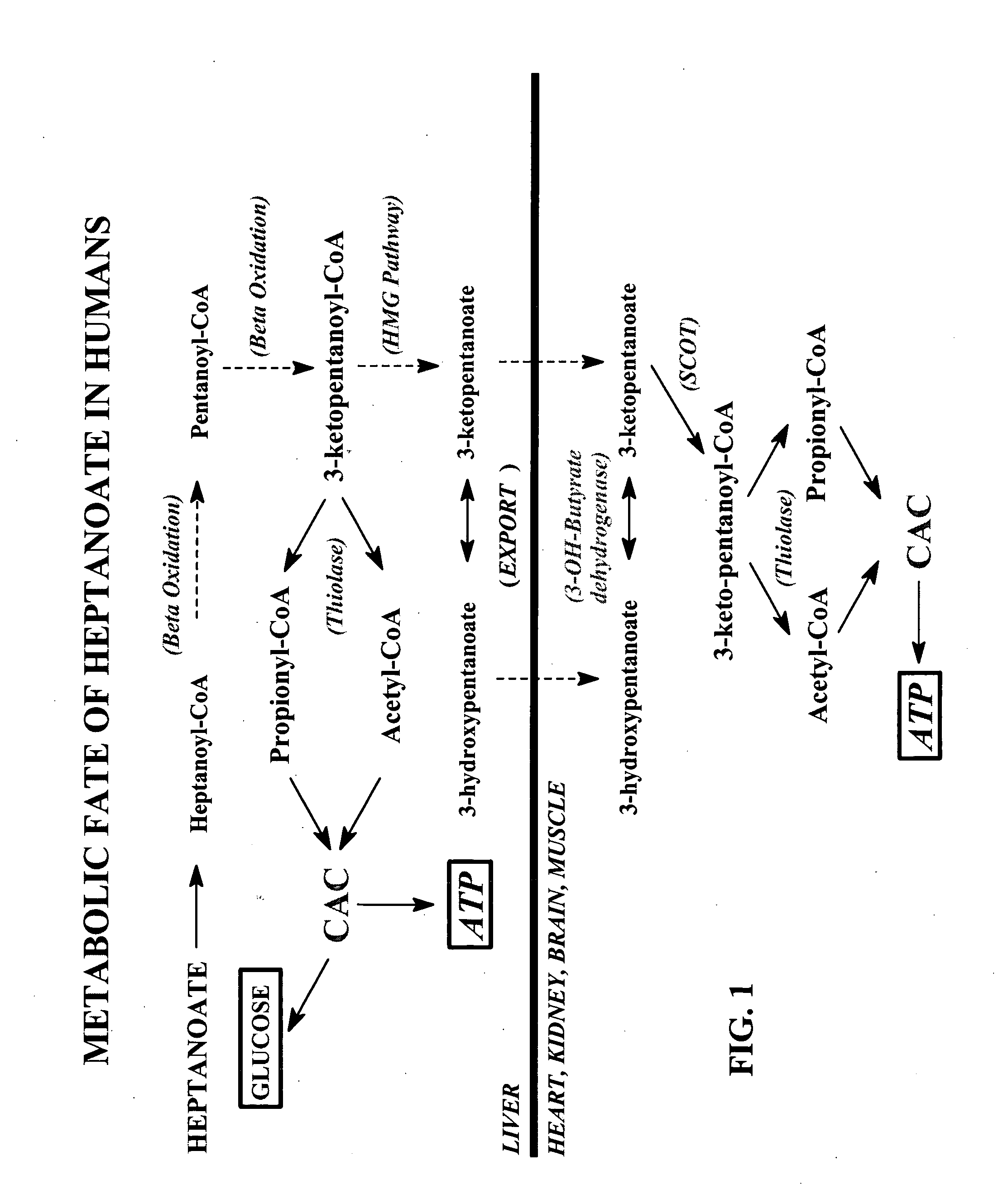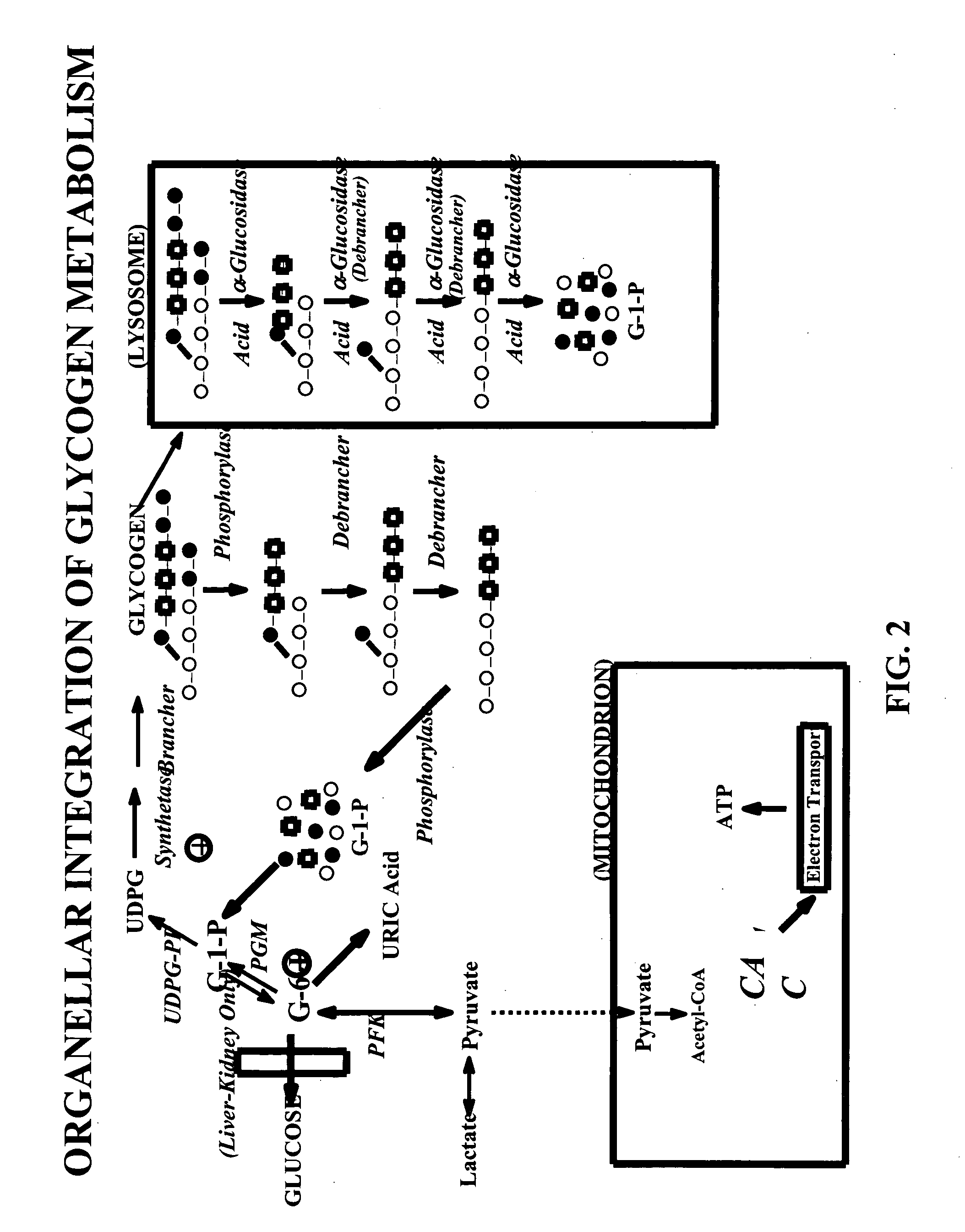Glycogen or polysaccharide storage disease treatment method
a glycogen or polysaccharide and treatment method technology, applied in the direction of metabolism disorder, drug composition, peptide/protein ingredient, etc., can solve the problems of respiratory failure and death, loss of weight and muscle mass, difficulty in breathing, etc., to treat and ameliorate the effects of glycogen or polysaccharide storage diseases
- Summary
- Abstract
- Description
- Claims
- Application Information
AI Technical Summary
Benefits of technology
Problems solved by technology
Method used
Image
Examples
example 1
Treatment of Human Subject Diagnosed with Acid Maltase Deficiency.
[0106] Clinical Description. A 42 year old caucasian female had onset of progressive muscle weakness and difficulty breathing dating back nearly 20 years. She was seen at 40 years for muscle weakness and a muscle biopsy revealed increased glycogen deposition in lysosomes and cytosol (2.0%—normal 1.03+ / −0.18%), autophagic vacuolization, and increased acid phosphatase staining. An assay for acid-α-glucosidase confirmed the deficiency as adult-onset GSD II (0.46—normal 8.13 + / −2.1 nm MU-hydrolyzed / min / gm). No therapy was initiated.
[0107] During the subsequent 2 years, the patient experienced progressive muscle weakness, affecting strength and endurance, swallowing and producing urgency for urination and defecation. The patient's breathing became a major issue and weight had decreased from ˜127 to 101 lbs (46 Kg) over this interval. Pulmonary evaluation a day prior to admission revealed MIP=−70 cm HOH; MEP=+60 cm HOH; F...
example 2
Treatment of Human Subject Diagnosed with GSDII
[0116] Clinical History & Description. A 66 year old white male whose history of muscle weakness dated back to his youth when he noticed weakness that caused limitations in sports activities. In his 40's, he became much more aware of weakness that primarily affected his back and legs. Spirometry, at that time, revealed reduced lung capacity. At age 54, a muscle biopsy was obtained that showed glycogen deposition in lysosomes and cytoplasm but was not increased (0.76%). Acid maltase was 0.94 (normal: 8.13+ / −2.1). Debrancher enzyme was also assayed in this biopsy and was 1.40 (range 1.88-4.24). Shortly after that, he experienced shortness of breath at high altitude and has used bilevel positive airway pressure (BIPAP) since that time also for sleep apnea. Patient muscle weakness was progressive and he has been using a motorized scooter for the past 10 years. Patient weakness was generalized, he had great difficulty standing, and walked w...
example 3
[0125] Treatment of Horses. Three horses affected with biopsy proven, polysaccharide storage myopathy have been successfully treated with the triheptanoin diet. The first was an 8 year old mare who was unable to walk or exercise without severe muscle pain, rhabdomyolysis, and “locking up.” The owners were approaching “putting the animal down” (killing it). Within 30 days of triheptanoin diet incorporated into feed pellets, this animal has become asymptomatic and has returned to full training and riding without any symptoms.
[0126] A second horse was encountered at 4 months with proven polysaccharide storage myopathy (PSSM) that was not able to walk adequately or nurse from its mother. The owners were prepared to kill the animal but decided to try the triheptanoin diet first. Within 24 hours of initiating the triheptanoin diet, the foal was running and playing with other young horses without any evidence of muscle pain, etc. All blood enzyme levels related to muscle disease (includin...
PUM
| Property | Measurement | Unit |
|---|---|---|
| Weight | aaaaa | aaaaa |
| Weight | aaaaa | aaaaa |
| Fraction | aaaaa | aaaaa |
Abstract
Description
Claims
Application Information
 Login to View More
Login to View More - R&D
- Intellectual Property
- Life Sciences
- Materials
- Tech Scout
- Unparalleled Data Quality
- Higher Quality Content
- 60% Fewer Hallucinations
Browse by: Latest US Patents, China's latest patents, Technical Efficacy Thesaurus, Application Domain, Technology Topic, Popular Technical Reports.
© 2025 PatSnap. All rights reserved.Legal|Privacy policy|Modern Slavery Act Transparency Statement|Sitemap|About US| Contact US: help@patsnap.com



